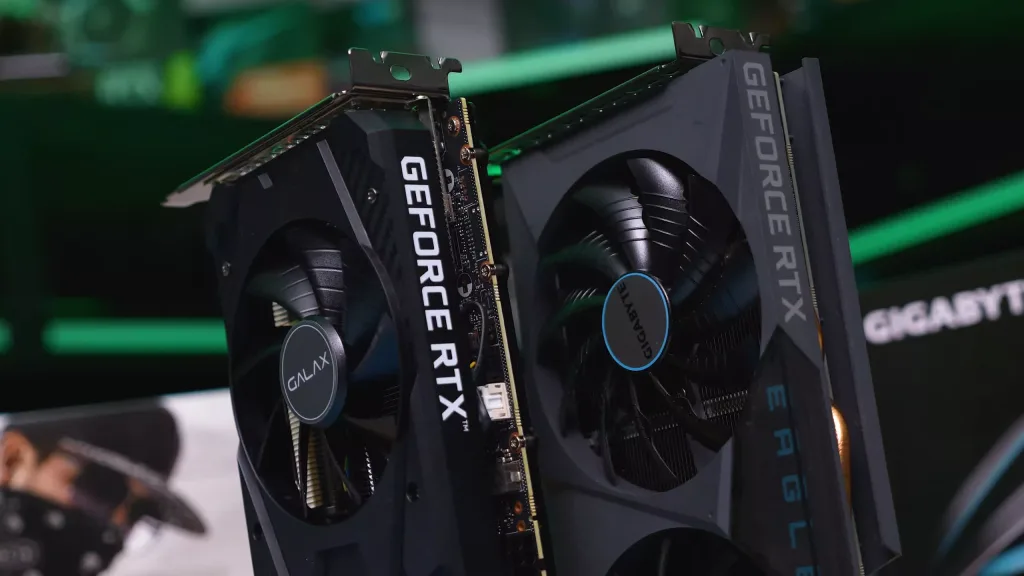One thing that might worry a custom PC builder is choosing the right components, and the power supply or the PSU is one of the most important decisions. This box is responsible for powering all the other components, most importantly the GPU. If it’s not sufficient, you will keep getting crashes in the middle of your gaming sessions.
Transient Spikes
Graphics cards overwork themselves when they render frames, especially on higher settings. This leads to what we call transient spikes – momentary high-voltage demands that the PSU has to satisfy. If it doesn’t have enough headroom to pull more power through the wall, the GPU will fail during these spikes.
These power spikes are becoming a growing problem. There are more complaints than ever before, making ATX 3.0 power supplies the new normal. You can use GPU-Z to monitor these. Underclocking is often a good solution in these cases.
These spikes can be handled by modern PSUs for the most part, but there’s always the risk of them tripping the inbuilt overcurrent protections that depend on a variety of factors, including the material of the capacitors. In very rare cases, these power spikes can short internal components or even cause a fire. A 450-500W GPU like the RTX 3090 Ti can hit power spikes of 700W and above. Add the other components you also have and the extra headroom you need to have just in case, this card will only feel safe to use on an 850-1000W PSU.
Efficiency Rating
When it comes to choosing the right PSU, there’s not much you need to pay attention to really. It’s just two things – the rated wattage and the power efficiency rating. It’s actually a measure of wastage, not the sufficiency of power. For example, a 500W PSU with 80% power efficiency will still provide up to 500W to your PC comfortably, it will just pull 20% more power than 500W from the wall, more or less.
More precisely, it’s not that simple. Slightly more power needs to be drawn to make up for the lost energy. So, given that 20% of 500W is 100W, the 80% efficient PSU won’t draw 500W+100W, but actually more than that.
PSUs convert AC power from the wall to DC power that the components use. 80% means that the PSU will be “wasting” 20% electricity as heat. There are currently no 100% efficient PSUs. The best we have is the 80 Plus standard followed by a tier (like Platinum or Gold). Expensive PSUs such as the Corsair RM1200x, EVGA SuperNOVA 1000 G5, and the Corsair HX1000i are all 80 Plus (Gold, Gold, and Platinum, respectively).
PSUs will only draw the amount of power that’s required by the components. But you can easily see how the total wattage becomes important when you consider transient spikes. Even though your PC is only demanding 400W, let’s say, while running a game (all components taken together), it might need 550W during a transient spike. That means you need a PSU that can handle 550W comfortably.
80 Plus Ratings

The 80 Plus rating is the most common one for gaming PSUs. You’re not recommended to settle for anything below this. There are five tiers:
- 80 Plus: Minimum 80% efficiency at 20%, 50%, and 100% load.
- 80 Plus Bronze: Minimum 82% efficiency at 20% load, 85% at 50% load, and 82% at 100% load.
- 80 Plus Silver: Minimum 85% efficiency at 20% load, 88% at 50% load, and 85% at 100% load.
- 80 Plus Gold: Minimum 87% efficiency at 20% load, 90% at 50% load, and 87% at 100% load.
- 80 Plus Platinum: Minimum 90% efficiency at 20% load, 92% at 50% load, and 89% at 100% load.
- 80 Plus Titanium: Minimum 90% efficiency at 10% load, 92% at 20% load, 94% at 50% load, and 90% at 100% load.
PSUs generally offer the highest efficiency at around 50% load. If you mix and match the right way and get a GPU that will draw roughly 50% when gaming, you’re getting the most efficiency out of the PSU. Technically, a good 80 Plus Titanium PSU is a 90 PSU.
For most, an 80 Plus Bronze ought to be enough. Gold is great if you’re more concerned about energy savings. Platinum is not that big of a difference for the additional money you’re spending.
Wattage Calculation
The exact recommended wattage for your GPU can be checked on the official website. If you want more granular control, you can use calculators offers by Newegg, Cooler Master, be quiet!, Seasonic, and MSI. You enter all your components like CPU, GPU, RAM, storage, fans, etc. and the calculator spits out a number. Add +50W to that and check for an 80 Plus Bronze PSU rated for that number closest to your budget.
Note that the wattage doesn’t have much to do with the power efficiency rating. The same product line of 80 Plus Gold PSUs can have multiple models at 500W, 750W, and 1000W, for example.
Parting Remarks
Transient power spikes are becoming a big issue. Gamers Nexus did an excellent video covering this:
That being said, if you have a GPU that’s not known for its power issues, bad cooling, or something else, you’re probably in the clear by sticking with any 80 Plus PSU with the recommended wattage. Some GPUs are more notorious than others in this regard, and they are often found in the high-end segment.
PSU manufacturers are also infamous for misleading gamers. For example, with some fine-tuned tests, they might achieve 95.x% efficiency under certain 50% workloads, and it will be sufficient for them to claim that it’s 80 Plus Titanium (96% efficiency at 50% load).





